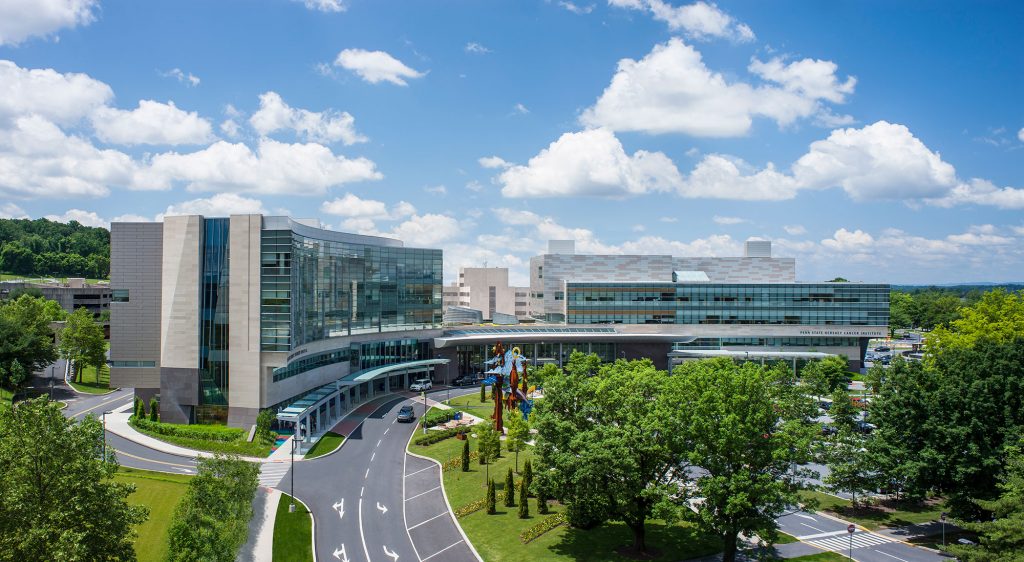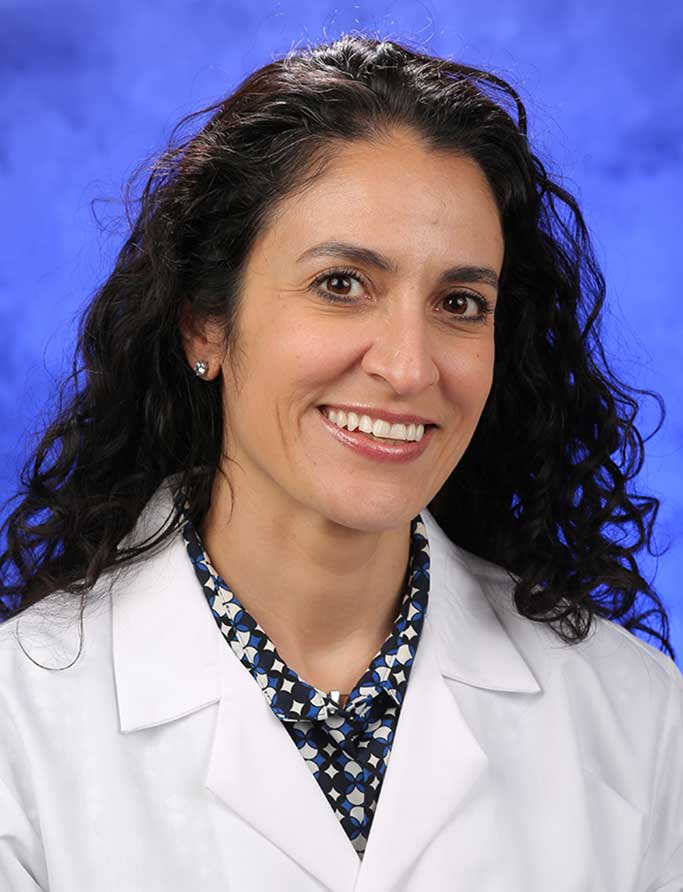Jump to topic
Search
Program Details
Most physicians do not receive training in medical education yet are required to teach and train medical students, residents, nursing, and or staff depending on institutional structure. The goal of this program is to teach emergency medicine physicians the knowledge and skills of becoming a medical educator so they are prepared to meet and excel at this requirement. The program focuses on 5 main pillars: clinical care, teaching, education, research and administration.
Penn State Health is well known for its ability nourish the curiosity and career goals of academic faculty. Emergency medicine medical education fellows will be submerged in a supportive environment of theoretical and experiential learning. Theoretical learning will occur through classes through the Penn State World Campus along with journal clubs and various faculty development courses. Experiential learning will occur through teaching shifts, didactic design, administrative projects, and various other hands-on experiences. Given the small size of the program, each fellow will receive close mentoring from some of the country’s leading experts on medical education. Each fellow will also have the opportunity to tailor some of his/her education to meet postgraduate goals and interests.
Learn More about the Fellowship
Curricular topics will include but are not limited to: educational theory, simulation, feedback, bedside teaching, procedural teaching, curriculum design, digital scholarship, academic promotion, advising/mentorship, evaluation processes, faculty development, recruitment and formal letter writing.
Program objectives are as follows.
Clinical care objectives
- Attend in the emergency department and supervise medical students, residents, and advanced practice providers.
- Uphold institutional R.I.T.E. values
- Meet documentation standards
- Work 8 shifts per month
- Participate in monthly multidisciplinary case review conference
Teaching objectives
- Prepare and facilitate at minimum of 8 hours of conference didactics per academic year
- Provide bedside teaching to resident learners.
- Facilitate emergency medicine rotating medical student simulation didactics.
- Participate in Penn State University College of Medicine medical student teaching opportunities.
Education objectives
- Attend American College of Emergency Physicians Teaching Fellowship
- Attend either yearly Society of Academic Emergency Medicine Conference or Council of Residency Director’s scientific assembly.
- Obtain medical education certificate if participating in 1 year fellowship
- Obtain Master in Education if participating in 2 year fellowship.
- Attend 1 Woodward Center faculty development session per month.
Research objectives
- Submit 1 manuscript per academic year for publication in an academic/education journal.
- Attend monthly medical education journal clubs
- Serve as a reviewer for an educational journal.
- In addition to the above items, 2 year fellows will complete a capstone project for the master program.
Administrative objectives
- Work with the Associate Program Director in the development, design, implementation and management of conference didactics.
- Serve on the Clinical Competency Committee
- Serve on the Program Evaluation Committee
- Conduct medical student candidate interviews.
- Conduct residency candidate interviews as designated by the emergency medicine residency program director.
- Work with Clerkship Director in the development, design and implementation of medical student didactics.
Applications will be accepted on a rolling basis starting July 1 until March 1 of the same academic year.
Medical education fellowship candidates must meet the following criteria to meet eligibility:
- Graduation from a US ACGME accredited emergency medicine residency
- Be either board certified or board eligible by ABEM/AOBEM
- Possess a DEA license by fellowship start date
- Possess an unrestricted medical license to practice in Pennsylvania by fellowship start date
Applications should be submitted in the form of one PDF document with the following:
- A cover letter
- A personal statement
- A curriculum vitae
- Program director email and telephone number
- Two additional references
Completed applications can be emailed to the fellowship director, Dr. Kalantari, at akalantari@pennstatehealth.psu.edu.
Virtual Tour
Penn State Health
Penn State Health is a multi-hospital health system serving patients and communities across 29 counties of Pennsylvania. Its mission is to improve health through patient care, research, education and community outreach.
In December 2017, the system partnered with Highmark Health to facilitate creation of a value-based, community care network in the region. The shared goal of Highmark and Penn State Health is to ensure patients in the community are within:
- 10 minutes of a Penn State Health primary care provider
- 20 minutes of Penn State Health specialty care
- 30 minutes of a Penn State Health acute care facility
Learn more about Penn State Health

Penn State Health Children’s Hospital (left), Penn State Health Milton S. Hershey Medical Center (center) and Penn State Cancer Institute (right)
Penn State Health Milton S. Hershey Medical Center
500 University Dr., Hershey, Pa., 17033 (Derry Township, Dauphin County)
- The health system’s 647-bed flagship teaching and research hospital
- The only medical facility in Pennsylvania accredited as both an adult and a pediatric Level I (highest-level) trauma center
- Dedicated surgical, neuroscience, cardiovascular, trauma and medical intensive care units
- Accredited Life Lion critical-care transport providing more than 1,100 helicopter and approximately 750 ground ambulance transports per year
- More than 1,300 faculty members and more than 650 residents and fellows
- Approximately 29,000 admissions, 73,000 emergency department visits, 1.1 million outpatient visits and 33,000 surgical procedures annually
- Designated as a Magnet hospital since 2007
Learn more about Milton S. Hershey Medical Center
Penn State Health Children’s Hospital
600 University Dr., Hershey, Pa. 17033 (Derry Township, Dauphin County)
- An eight-story, 263,000-square-foot-facility built in 2013 and expanded in 2020
- 146 licensed pediatric beds, 18 acute care beds and a 56-bed neonatal intensive care unit
- Level IV (highest-level) neonatal intensive care unit
- Level I quaternary (highest-level) pediatric intensive care unit
- Level I (highest-level) pediatric trauma center designation
- Intermediate care unit
- Dedicated pediatric operating rooms
- More than 150,000 pediatric outpatient visits and approximately 5,000 pediatric patient discharges annually
Welcome to Hershey
More About Hershey
Interested in learning more about living and working in Hershey, Pa.? See details here:
Wellness, including emotional, spiritual, social and physical health, is a crucial component to training and to becoming a professional, compassionate and resilient physician. Self-care is a skill which must be continually practiced and reinforced. Penn State College of Medicine and Penn State Health are committed to addressing wellness among residents and fellows, with multiple resources readily available.
Institutional resources
- Visit BeWell – a health program designed to support Penn State Health employees
- See Penn State College of Medicine wellness resources here
- Employee Health Care Concierge and Case Management Service
- Partners in Medicine
Moving to a new city with your family does not have to be stressful. Residency programs have assisted many significant others with finding employment. There is also a GME-Wide Partners in Medicine (PIM) group that offers networking opportunities as well as various social and community oriented activities. - The Doctors Kienle Center for Humanistic Medicine
- Active and easily accessed Office of Professional Mental Health
Graduate medical education resources
Institutional Resources
Penn State Health and Penn State College of Medicine celebrate, embrace and support the diversity of all patients, faculty, staff, students and trainees.
Office for Diversity, Equity and Inclusion
In keeping with this, Penn State Health has an active Office for Diversity, Equity and Inclusion with various programs, networks and resource groups, including:
- Talks and lectures on diversity, equity and inclusion through the Inclusion Academy
- Regular events on topics such as eradicating racism and creating a culture of inclusiveness
- Many Business Employee Resource Groups (BERGs), including:
- Disability Business Employee Resource Group
- Interfaith Business Employee Resource Group
- LGBTQ+ Business Employee Resource Group
- Military and Veterans Business Employee Resource Group
- Multicultural Business Employee Resource Group
- NextGen Business Employee Resource Group
Learn more about the Penn State Health Office for Diversity, Equity and Inclusion
Learn more about the College of Medicine’s Office for Diversity, Equity and Belonging
Office for Culturally Responsive Health Care Education
The vision at Penn State College of Medicine and Penn State Health is to equip learners with the knowledge, skills and attitudes they will need to provide culturally excellent health care and research for an increasingly diverse U.S. population. The Office for Culturally Responsive Health Care Education was formed to help meet that goal.
Learn more about the Office for Culturally Responsive Health Care Education
Office for a Respectful Learning Environment
In addition, the institution does not tolerate discrimination, biases, microaggression, harassment or learner mistreatment of any kind, and any concerns are immediately addressed by the Office for a Respectful Learning Environment.
Learn more about the Office for a Respectful Learning Environment
Network of Under-represented Residents and Fellows
The Network of Under-represented Residents and Fellows (NURF) is a group of diverse residents and fellows representing all specialties. NURF’s goal is to promote cultural diversity in the residency programs through community involvement, mentorship with diverse faculty, professional networking and support for the recruitment of diverse medical students into the residency programs.
NURF is sponsored by the Penn State College of Medicine Graduate Medical Education Office and the Penn State Health Office for Diversity, Equity and Inclusion.
Latest News from Emergency Medicine




